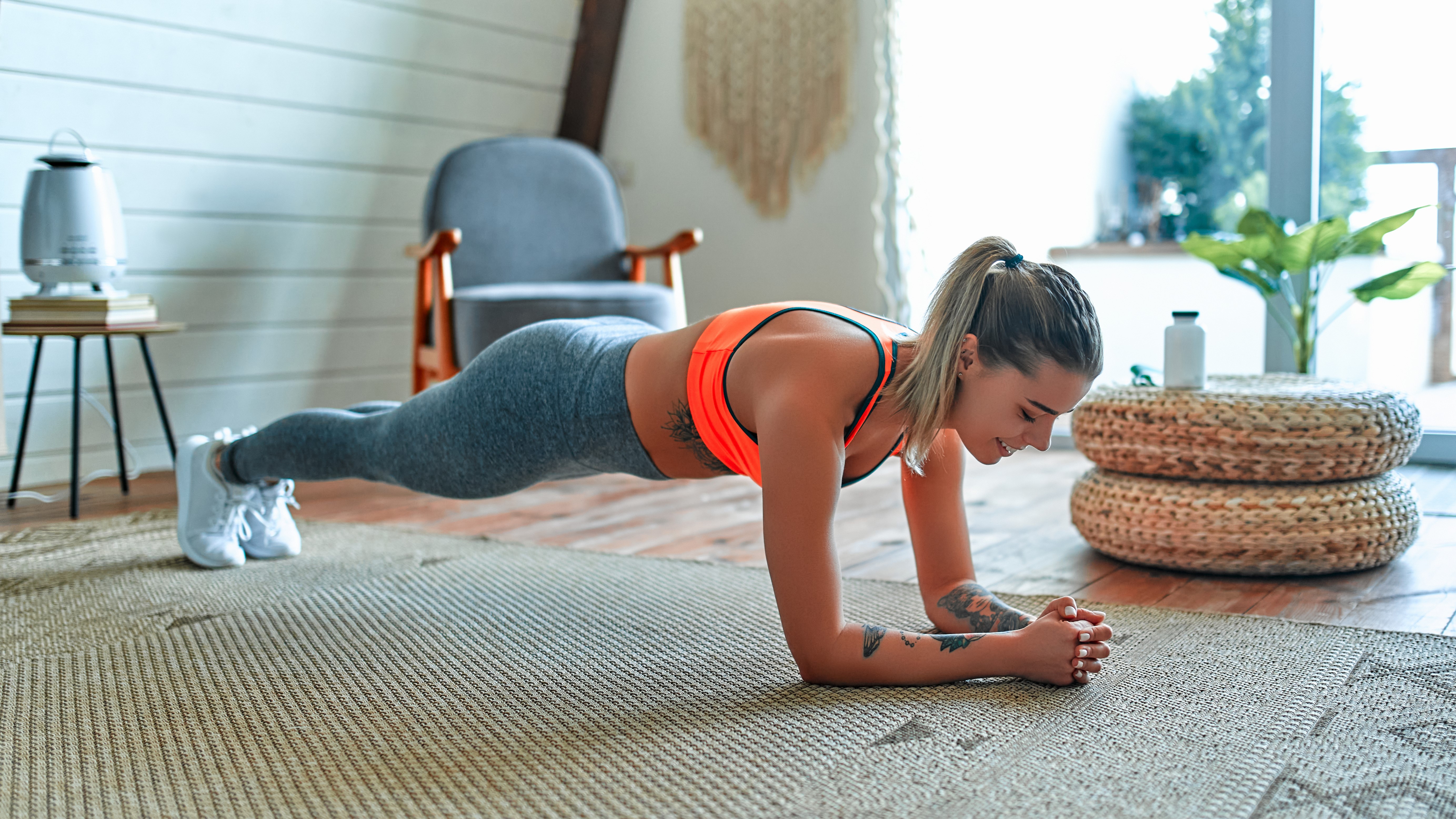Goodbye sit-ups! This 10-minute workout will help you build a stronger core and strengthen your pelvic floor muscles
Target your deep core muscles with no equipment needed

Here’s a question for you: when was the last time you strengthened your pelvic floor muscles? This collection of muscles, located deep within your core, supports some of the most essential functions in your body. Along with helping you maintain balance and good posture, these muscles promote healthy bladder, bowel, sexual function, and more.
However, for one reason or another — whether it’s due to lack of awareness, embarrassment, or common misconceptions — strengthening your pelvic floor muscles is often a task that gets overlooked. But just because you can’t visibly see these muscles, it doesn’t mean they should get ignored.
The upside is that strengthening your pelvic floor doesn’t need to take hours out of your day. As demonstrated by fitness trainer Lindsay Bomgren of Nourish Move Love, all you need is a speedy 10-minute deep core workout to strengthen this area of your body. And better yet, you won’t need anything but your bodyweight and a stable surface, like a yoga mat, to get started.
Watch how to do Lindsey Bomgren’s 10-minute workout
Featuring nine exercises in total, with 40 seconds of work and 20 seconds of rest, Bomgren kicks off this workout with some breathwork to help you activate your core. In a kneeling position, Bomgren encourages you to use your breath to ‘wrap’ your core muscles around you like a ‘shoelace’.
After you’ve completed this, you’ll enjoy a 20-second break before getting into your first core exercise, which is the bear crawl hover. Next up is a forearm plank, one of the many plank variations. Then, it’s onto a C-shape hold and alternative knee drives. This is followed by C-shape side-to-side sweeps, a full body roll up, dead bug, hollow rock hold & alternating knee pull, double leg pulls & roller boats.
The great thing about this workout is that no matter whether you're a novice or you’ve tried some of these moves before, Bomgren demonstrates and explains how to do each exercise. While her workout partner, Rachel Schaefers, shows you modifications.
Bomgren includes a mix of isometric core exercises, such as a plank and dead bug, followed by a combination of dynamic isotonic exercises, including a full-body roll-up and roller boats. The former exercises are static, whereas the latter involve movement.
Get instant access to breaking news, the hottest reviews, great deals and helpful tips.
Both come with their benefits. For example, some evidence suggests that isometric exercises can lower blood pressure when done regularly and with proper breathing. Another research paper, published in Applied Sciences, states that isotonic training is more efficient in increasing muscle strength, muscular endurance, and flexibility in young adults when compared to isometric training.

What are the benefits of strengthening your pelvic floor muscles?
When you don’t strengthen this area of the body, it can result in weakness.
“Weakness of the pelvic floor muscles leads to urinary urgency, urinary frequency, urinary leakage, fecal urgency or leakage, and sexual dysfunction,” explains physiotherapist Kristi Kliebert, who serves on the Board for the Academy of Pelvic Health. “In addition, a weak pelvic floor can contribute to balance issues and instability with walking. It can also contribute to hip and back pain.”
In times gone by, pelvic floor exercises, like the much-loved Kegel exercise, were only recommended to those who were pregnant or postpartum. But the truth is, almost everyone can benefit from completing pelvic floor exercises.
“Pregnant or postpartum moms, individuals who have undergone pelvic or abdominal surgeries, those who have had pelvic or abdominal cancers, and any of the conditions listed above may benefit from strengthening,” Kliebert says. Whereas the expert notes that for some individuals who have tension in their pelvic floor, due to things like endometriosis and other painful pelvic conditions, pelvic floor strengthening may not be necessary.
“With that being said, there is no way to make a blanket statement, and any individual who is thinking they may need exercises should be assessed to determine if it is truly appropriate,” Kliebert adds.
More from Tom’s Guide
- Forget planks — 6 Pilates exercises to help you rebuild your core postpartum
- Forget sit-ups — these are the best exercises to rebuild your core after a baby
- 7 Diastasis Recti-safe abdominal exercises to try
Becks is a lifestyle journalist who specializes in writing about wellness and home products, from mattresses to weighted blankets and cooling comforters. She has tested a number of mattresses for Tom's Guide, putting them through their paces to see if they stand up to the brand's claims, and offering recommendations as to the type of sleeper they will (and won't) suit.
You must confirm your public display name before commenting
Please logout and then login again, you will then be prompted to enter your display name.


